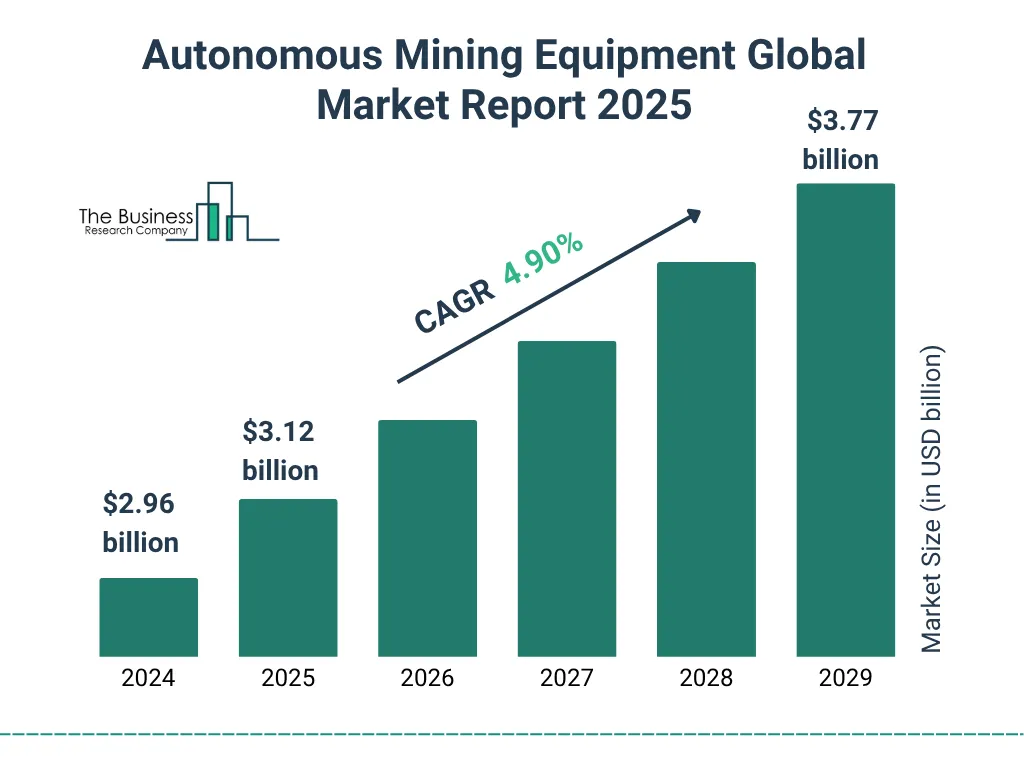The mining sector is witnessing a rapid shift towards automation, with nearly 5% of key mining equipment now autonomous, autonomous-ready, or tele-remote, according to a series of reports from GlobalData. This marks a significant increase from less than 1% in 2020, indicating a accelerating trend in the adoption of autonomous mining equipment.
David Kurtz, global head of mining research at GlobalData, highlights the driving forces behind this trend: “While in Australia we estimate already well over 10% of haul trucks are autonomous or autonomous ready, the number identified in China has risen rapidly in the past few years, with China now accounting for more than half of all autonomous and autonomous-ready equipment in operating mines. Helping to drive adoption are the benefits that autonomous equipment delivers, including improved productivity – typically cited by miners to be between 10% and 30% – increased operating hours, lower fuel consumption, reduced maintenance and improved safety.”
The initial adoption of autonomous mining equipment in 2008 was slow due to high capital costs, connectivity challenges, integration with legacy systems, and an uncertain return on investment, particularly for smaller mines. However, the sector has seen a significant shift in recent years. By 2020, early adopters like Australia, with Rio Tinto and Fortescue operating fleets of over 160 haul trucks, set the stage for broader adoption. BHP, for instance, has since built up its fleet to become the largest operator of autonomous and autonomous-ready haul trucks in Australia.
Today, the adoption of autonomous mining equipment is heavily concentrated in a few countries. China leads the way with 56% of the global share, followed by Australia (21%), Canada (7%), Chile (5%), and Brazil (1.4%). This concentration is also evident in the distribution across mines. Out of nearly 300 mines tracked by GlobalData, ten mines account for 30% of the total equipment count, with seven of these mines located in China and three in Australia. The Baishihu Coal Mine in China, owned by Guanghui Energy, stands out with 420 autonomous haul trucks, the largest count recorded.
Looking ahead, the trend towards automation is set to continue. Major additions of autonomous haul trucks are planned by several companies. For example, the Yimin Coal Mine in China expects to add another 200 autonomous trucks over the next three years, bringing the total to over 300. In Australia, Fortescue has partnered with Liebherr for the supply of 360 battery-electric autonomous trucks for its Pilbara iron ore mining operations between 2025 and 2030.
This rapid adoption of autonomous mining equipment is likely to shape the future of the sector in several ways. Firstly, it could lead to increased productivity and efficiency, as autonomous equipment is designed to operate continuously and with greater precision. Secondly, it may drive down operational costs over time, as autonomous systems can reduce fuel consumption, maintenance, and labor costs. Thirdly, the focus on safety could improve significantly, as autonomous equipment can minimize human exposure to hazardous environments.
However, the shift towards automation also presents challenges. The high capital costs and the need for robust connectivity and integration with existing systems remain significant barriers, particularly for smaller mines. Additionally, the concentration of autonomous equipment in a few countries and mines raises questions about the global distribution of technology and its economic implications.
As the mining sector continues to evolve, the adoption of autonomous equipment will likely play a crucial role in determining the future landscape of the industry. The trend towards automation is not just a technological shift but also a strategic one, with implications for productivity, safety, and economic competitiveness. The sector must navigate these changes carefully, balancing the benefits of automation with the need for equitable access and sustainable development.

